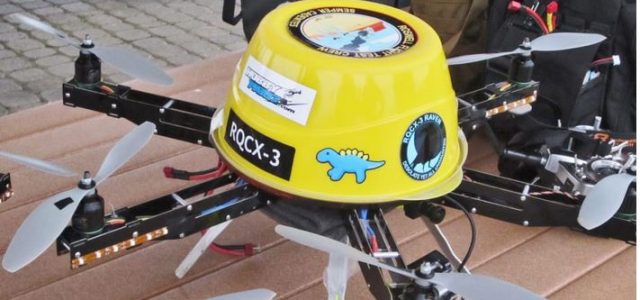The University of Nebraska-Lincoln’s Drone Journalism Lab and the Missouri Drone Journalism Program at the University of Missouri are two programs teaching journalism students the basics of flying unmanned autonomous vehicles (UAVs), using still and video cameras to gather aerial information, the ethics of operating flying cameras, FAA regulations and safety, and how to interpret aerial footage. The goal is to turn information gathered from the air into workable stories.
Both programs are experimental, but operate in different ways. The Nebraska Lab is integrated into the university’s college of Journalism and Mass Communications, and serves as a stand-alone proof-of-concept learning lab. “In short, drones are an ideal platform for journalism,” according to the lab’s mission statement online.
However, the Missouri Program is a partnership between the university’s Journalism School, Information Technology program, and a local NPR affiliate KBIA. While Nebraska’s project has been going on since late 2011, Missouri’s drone journalism effort launched in 2013. The NPR affiliate secured a $25,000 grant for the university to build custom drones.
One story published by the University of Nebraska program used drones to document an ongoing drought. The University’s drone lab NIMBUS provided several UAVs to the journalists to explore the story. “We turned all flight operations over to Carrick Detweiler, a professor of computer science at UNL and cofounder of the NIMBUS Lab. He flew the lab’s Ascending Technologies Falcon 8 UAV, a $25,000 aircraft with eight rotors and a gimbal-mounted camera on the front. Detweiler had experience with the vehicle and with flying it,” commented Matthew Waite of the Drone Journalism Lab.
“We talked about what we wanted to see from the air before going up and we left Detweiler to fly the UAV. That’s an important point. The pilot of the UAV is responsible for the safety of the vehicle and anyone around it. So the pilot needs to be left alone to fly, not take over-here-now-over-here directions from a journalist. During battery changes, we talked briefly about what we were getting, and that was it.”
Once footage was compiled, the finished video was used to portray a record-breaking drought in their home state of Nebraska. The journalists also experimented with a homemade tool: a scientific data-gathering UAV. Another UAV, the Ascending Technologies Hummingbird, was equipped with an improvised rig of dowels, electrical tape, and a glass ampule to acquire a water sample. The drone successfully acquired testable water samples from the Platte River. Video from the finished story is shown below.
Waite told Fast Company that there are three students currently participating in the lab and that, due to the cold winter weather, the lab is currently working on improving flying skills until spring arrives.
The Missouri program also uses science stories to demonstrate the capabilities of drone journalism. Students from the Drone Journalism Program, which just launched earlier in February, are planning to use UAVs to cover prairie burns–controlled fires set by government authorities to preserve and maintain prairie lands.
“In an attempt to use drones in new and emerging ways, our program is hoping to use several drones to capture aerial video footage of the prairie burn while it is in progress and utilize that footage as part of a multimedia story about prairie burns in mid-Missouri,” said student Robert Partyka. Information gathered from the UAV project will then be used in a future story by their local NPR affiliate.
“Drones tend to have a negative connotation in today’s media. The public mostly hears the word drone when associated with war and destruction. However, drone technology can be used in many other aspects, including field reporting. Part of this project’s goal is to discover how best to utilize this technology in the field of journalism,” Partyka added.
However, the idea of drone journalism has raised concerns from both civil libertarians and legislators. There is fear the same technology could be employed by overzealous police departments, private investigators, and peeping toms–and some politicians are simply afraid of the ramifications from journalists and paparazzis being able to deploy flying cameras at will. –BY PATRICK SHERMAN



















